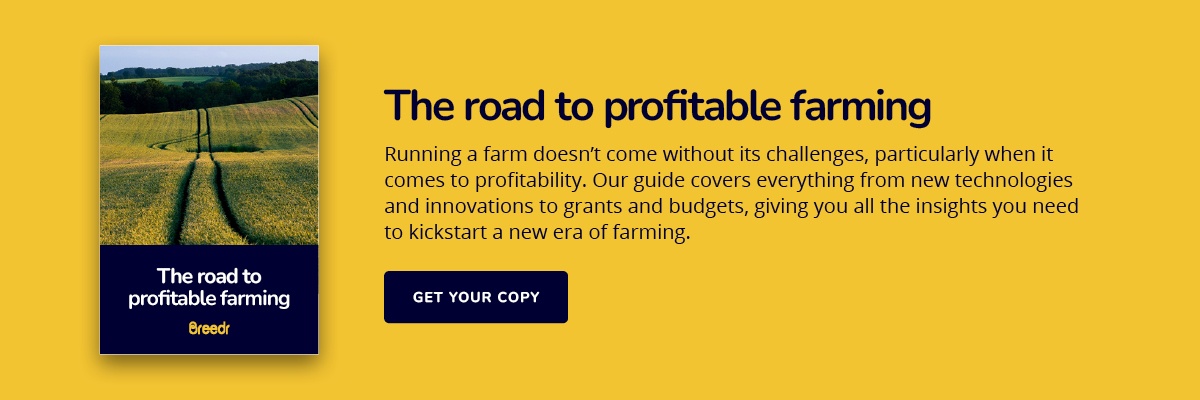What is regenerative farming? And what are the benefits?

If you’re invested in learning more about agricultural sustainability, then the chances are you’ll already have regenerative farming on your radar.
It’s a concept gaining traction and for good reason. We’re here to take you through what regenerative farming is and the benefits it could hold for you, your farm and the planet.
What is regenerative farming?
Sustainability is at the heart of regenerative farming and it’s a concept already reaping the rewards for many farms. It’s about improving farmland health and productivity by increasing biodiversity, enriching the soil and regenerating the land around you.
Although regenerative farming helps cut emissions, contributing to the reduction of the overall climate crisis, there are additional benefits you’ll personally gain as a regenerative farmer.
Regenerative farming practices reduce costs and improve productivity by increasing the nutrient density of foods, minimising the need for artificial fertilisers and decreasing the amount of animal feed used. With the rising production costs and uncertainty surrounding subsidies, this can only be seen as a positive.
“People may be getting a higher yield with conventional approaches, but it is costing more too with all the inputs, so they are not making more money.” John Cherry, founder of Groundswell.
Although, it’s not as cut and dry as following in the footsteps of other farms. Regenerative techniques will vary from farm to farm, influenced by unique circumstances such as soil type, weather and geography. If you’re looking to adopt regenerative farming, you should tailor your approach to match your farm’s needs and circumstances. We have tips on how to get started later in this article.
The need for regenerative farming to reduce UK emissions
One thing is clear — the climate emergency in the UK needs to be tackled. Agriculture currently accounts for 10% of the UK’s greenhouse gas (GHG) emissions and regenerative farming can help reduce that.
One of the main benefits of regenerative farming is that it reduces emissions by increasing biodiversity and boosting soil quality. Farmland will then sequester more carbon, acting as a carbon sink.
Regenerative farming can dramatically reduce carbon emissions, helping the farming industry as a whole to reach net-zero targets by 2050 or earlier. It has the potential to reduce the UK’s annual GHG emissions by 5.6 MtCO²e — or in simpler terms, the equivalent of taking 900,000 cars off the roads.
Adopting regenerative farming: Tips to get started
The first — and arguably most important — tip is to introduce regenerative processes gradually. You don’t want to expose your business to too much risk. It’s also essential to have a well-thought-out plan based on the unique characteristics of your farm, such as your farm’s rotation, animal types, geographical location, soil type and level of risk.
Groundswell, a leading regenerative agricultural organisation, has detailed the five principles of regenerative agriculture you should consider to kickstart your journey:
- Don’t disturb the soil - The soil of your farmland is made up of billions of organisms, fungi, air pockets, aggregates and soil particles. Using large amounts of chemicals or excessive ploughing can damage this network and soil health.
- Keep the soil surface covered - Crops will protect the soil from adverse weather, such as heavy rainfall or scorching sun.
- Keep living roots in the soil - These will feed the network of organisms as discussed in step one.
- Grow a diverse range of crops - Grow multiple crops in one location, if possible. This enhances soil health as monocultures don’t happen in nature.
- Bring grazing animals back to the land - Mixed farming systems are the key to the success of regenerative farming. As well as enhancing soil health, it allows arable farmers to rest their land.
While all of these tips are essential to the success of a regenerative farming approach, it’s just as much about the mental shift as the physical shift. Regenerative farming will require you to change how you view and practice farming.
By understanding the benefits to both the planet and your pocket, you’ll be able to reap the rewards regenerative farming has to offer.
The future of regenerative farming
EIT Food believes that farmland may only support a further 60 harvests until a change becomes essential.
The NFU has already set targets for UK farming to be climate neutral by 2040. As the need for greater sustainability increases and more targets come into place, farms will need to change.
However, you won’t have to face it alone. High-tech tools such as sensors and apps are being introduced to help farmers like you on their sustainability journey.
And what about financial help? Under new subsidy plans announced, farmers will be offered up to £70 per hectare to take up regenerative techniques and recommendations have been made by Henry Dimbleby’s National Food Strategy for increased funding.
A better understanding of your farm today
Are you ready to kickstart your profitability journey? Then you’ve come to the right place. Click the link below to head over to our profitability page and learn about the latest innovations, technologies and processes.





